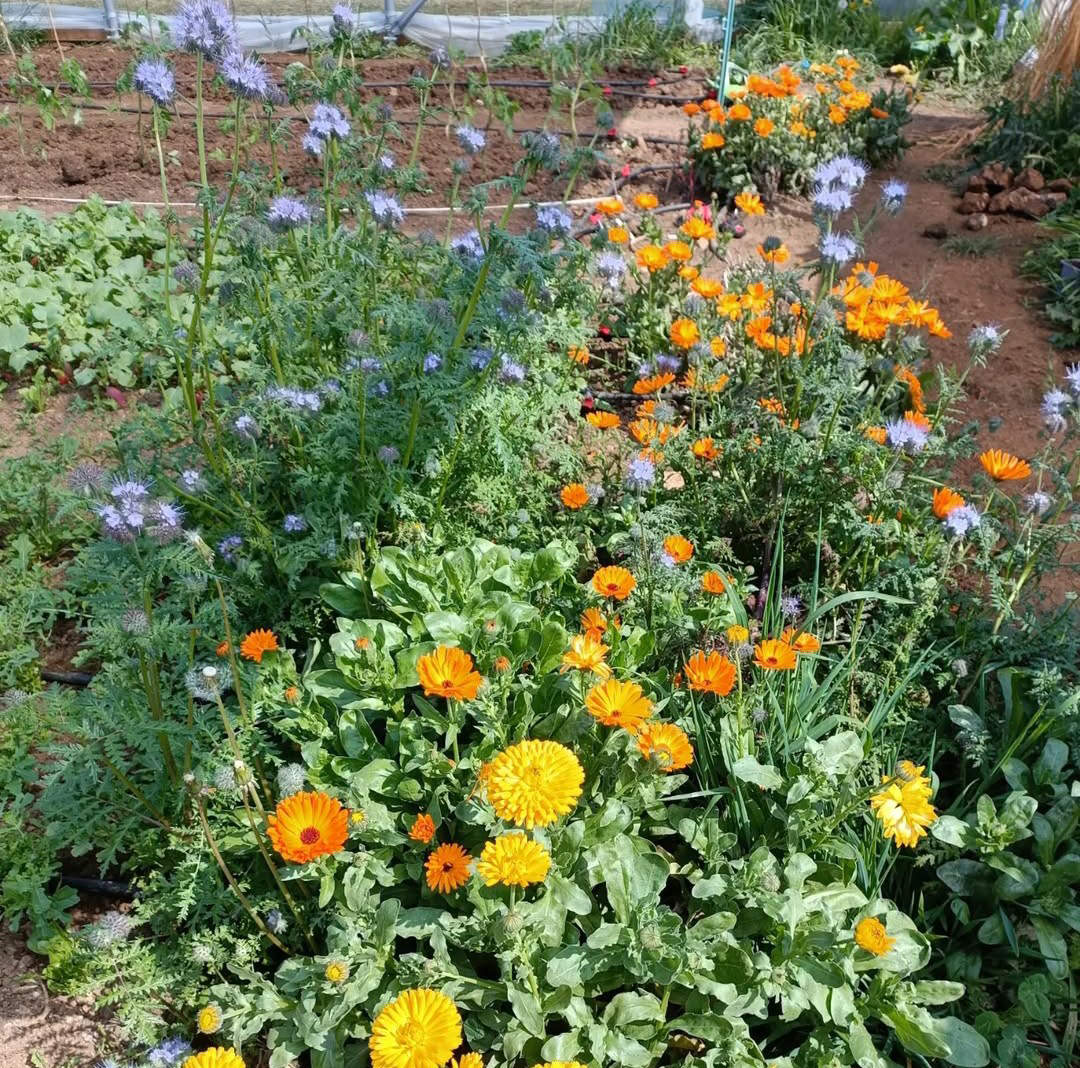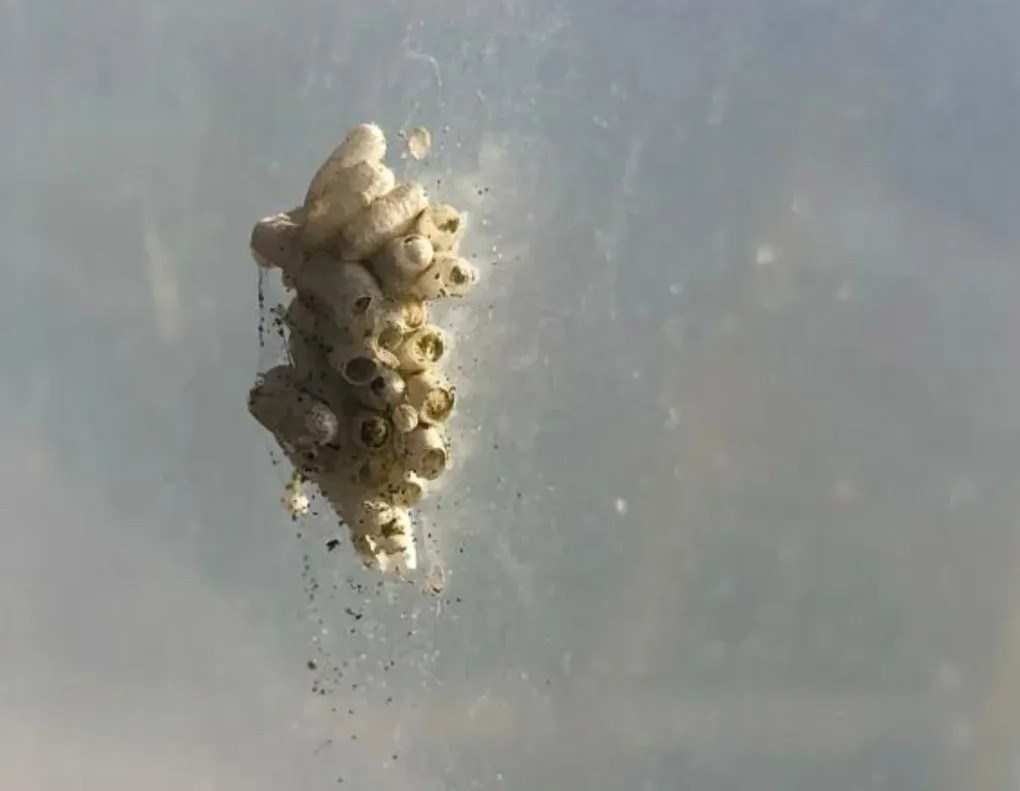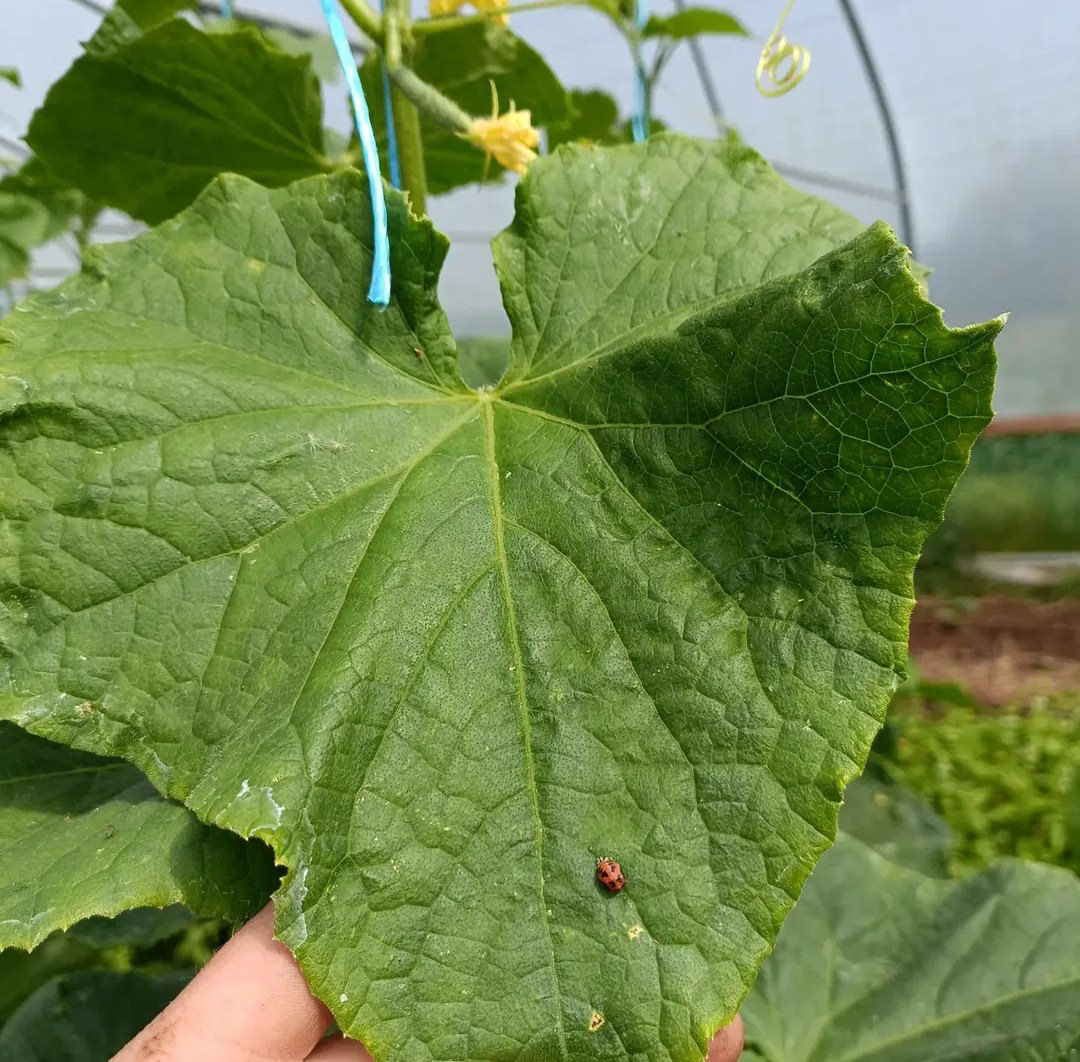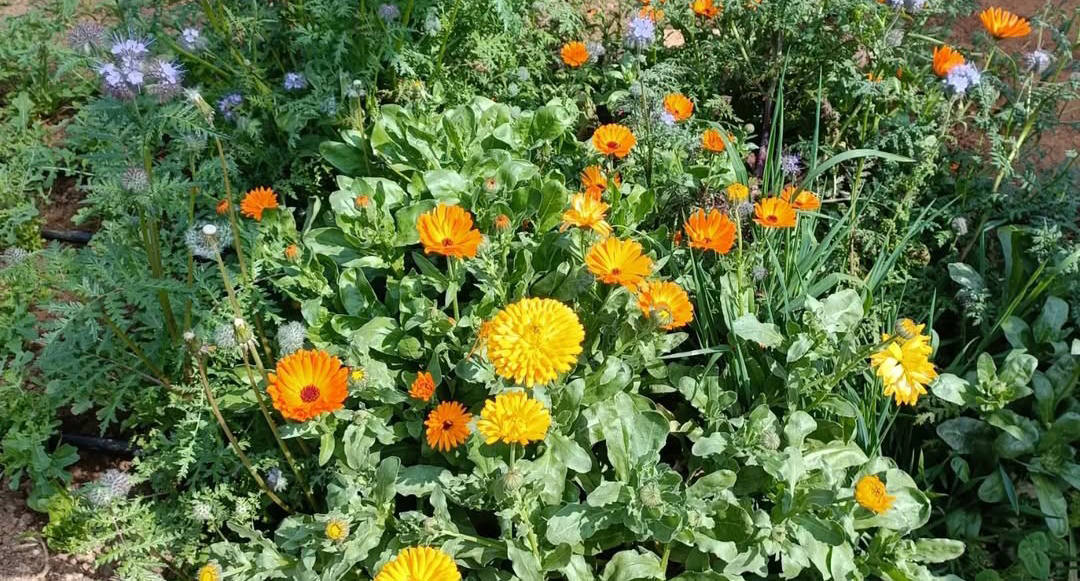In organic vegetable production where we do not use any pesticides, the emphasis for creating a healthy system is in supporting a diverse ecosystem that can self-manage. We actively encourage biodiversity, planting for pollinators and soil health alongside our cash crops. We do have to share our produce to a certain extent with other creatures that cohabit the space but also need to work to limit crop damage. What better way to do this than to encourage the natural prey-predator relationships already existing all around us to do it for us!

Biodiverse borders in the polytunnels
The one pest that everyone always moans about when growing vegetables is, of course, slugs. There are many ways that folk try to keep the slug populations down, one of which for us, is nematodes. Nematodes are (mostly microscopic) worms that are found across the planet, making up around 80% of all individual animals on Earth; they can be found in almost every ecosystem, from deep sea to soils, polar regions to tropics and at every elevation. Certain nematodes parasitise slugs and they get a warm welcome in the market garden. When the soil has heated up enough for them to thrive, we spread them across the beds in water. We would love to have frogs around the market garden too as they eat slugs and an exciting project for this year is to build a pond, which will boost the biodiversity significantly.

Parasitic Wasp cocoons
Although we buy and spread the nematodes, most of our work to encourage predators is simply by creating the habitat or food source to entice them in! We were very excited last week to find the hatched cocoons of the parasitic wasps that prey on the cabbage white caterpillar. These incredible little wasps have an intricate system of reproduction that involves them laying eggs in the living caterpillar – which they detect by a chemical released when the caterpillar starts munching on our brassicas. The wasp larvae then pupate inside the caterpillar, influencing it to climb to a safe place for them to hatch, where its final act will be to weave a protective cocoon around them before it dies. And the cycle repeats itself. This is just one example of a myriad of complex relationships that has formed in the natural world, one that not only supports this particular wasp but also helps us by keeping the cabbage white population at a manageable level.

Ladybird pupa on a cucumber leaf
Another beneficial predator-prey cycle that we observed in the polytunnels last year was when the aphids descended on the cucumbers. Within a short space of time we observed lots of spiny little orange and black pupa appearing on the cucumber leaves, out of which emerged ladybirds. In the larval stage, the ladybird children devour copious numbers of aphids, which was very useful for us.
By planting a high diversity of plants for crops and pollinators, creating habitat niches like ponds and beetle banks and looking after the soil we are encouraging as much diversity as we can. This sets the stage for the fascinating and complex relationships in nature to thrive, benefitting the ecosystem in general but also bringing balance to the market garden flora and fauna.
Athene Peel
